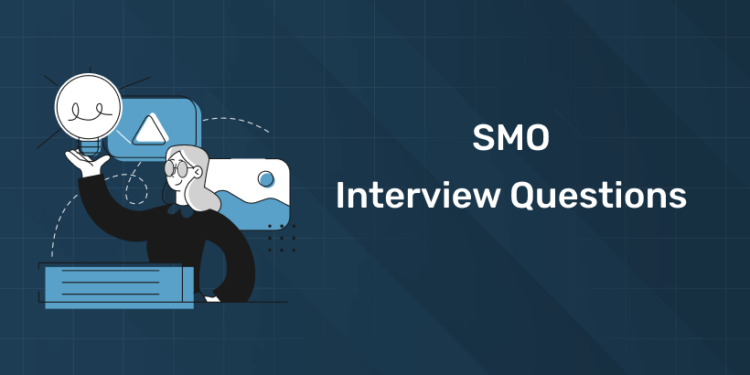Table of Contents
Social Media Optimization (SMO) is a part of digital marketing that focuses on optimizing social media to increase brand awareness, traffic and engagement. As companies realize the importance of social media presence, the demand for SMO professionals is growing. If you are preparing for an SMO interview, this post will help you with the top SMO interview questions and answers and also introduce you to Entri’s full Digital Marketing Course to help you become a pro in SMO.
Preparation Tips For SMO Interview
- Core Concepts: Get familiar with the basics of SMO – content strategy, audience engagement and platform algorithms.
- Stay Trendy: Keep up with the latest social media trends, algorithm updates and new platforms by following industry blogs, attending webinars and joining online communities.
- Portfolio: Showcase your previous SMO projects, campaigns and results. A well documented portfolio can make a big difference.
- Master Tools: Get hands on experience with popular SMO tools like Hootsuite, Buffer, Sprout Social and Google Analytics to manage, schedule and analyze social media activities.
- Analytical Skills: Practice interpreting data and metrics to measure social media campaign performance. Understanding KPIs (Key Performance Indicators) is key to this.
- Unique Value Proposition: Be prepared to tell what sets you apart as an SMO professional. Highlight your skills, experiences and achievements that match the job role.
SMO Interview Questions and Answers
1: What is the primary goal of SEO (Search Engine Optimization)?
1. What is Social Media Optimization (SMO)?
Answer: SMO is optimizing social media profiles and content to increase brand awareness, traffic and engagement across social media platforms. It includes content creation, social sharing and using relevant hashtags.
2. How do you stay trendy?
Answer: I subscribe to industry newsletters, follow key influencers on social media, participate in online forums and webinars and read blogs like Social Media Examiner and HubSpot.
3. What are the KPIs for SMO?
Answer: KPIs are engagement rate, click-through rate (CTR), reach, impressions, follower growth rate, shares, comments and conversion rates. These help measure SMO campaign performance.
4. How do you handle negative comments on social media?
Answer: I respond promptly and professionally, acknowledge the issue, offer solutions and take the conversation offline if needed. Stay calm and constructive.
Learn Digital Marketing Fundamentals! Get a Free Demo Here!
5. What is the role of hashtags in SMO?
Answer: Hashtags make posts discoverable by categorizing content and making it searchable. Using relevant and trending hashtags can increase engagement and reach.
6. How do you measure SMO campaign success?
Answer: Success is measured by analyzing engagement rate, reach, traffic to the website, conversion rate and return on investment (ROI). Google Analytics and native social media insights are key to this.
7. How do I grow my social media followers?
Answer: Create good content, engage with followers, run contests and giveaways, collaborate with influencers, use paid ads to reach more people.
8. How do I create content for social media?
Answer: I create content by knowing the audience, using pretty pictures, writing catchy headlines, telling stories, and asking questions and using calls to action.
9. What tools do you use?
Answer: I use Hootsuite for scheduling, Sprout Social for analytics, Buffer for content curation and Google Analytics for website traffic and conversion metrics.
10. How do you deal with a social media crisis?
Answer: I respond quickly, I’m transparent, I address the issue directly, I provide solutions and I communicate with the audience consistently. You have to monitor the situation and adjust as needed.
11. What’s the difference between organic and paid social media?
Answer: Organic social media is content that appears in users’ feeds without paid promotion. Paid social media is using ads to increase reach and engagement, targeting specific demographics to achieve specific goals.
12. How do you optimize content for each social media platform?
Answer: I tailor content for each platform by knowing its audience and best practices. For example, short posts with hashtags on Twitter, pretty pictures and videos on Instagram, articles on LinkedIn.
13. What are the common SMO mistakes?
Answer: Neglecting audience engagement, posting irrelevant content, not using analytics to adjust strategy, overusing hashtags and not responding to comments and messages on time.
14. How do you use social media analytics to improve?
Answer: I use analytics to track metrics, identify trends and adjust. I monitor engagement rates, click-through rates and conversion rates and use insights to refine content and campaign.
15. How do social media algorithms affect content visibility?
Answer: Social media algorithms decide what content appears in users’ feeds. Knowing these algorithms helps you optimize content for visibility, so your posts are engaging, relevant and timely.
16. How do you increase engagement on Facebook?
Answer: I increase engagement on Facebook by posting good content, using pretty pictures, engaging with followers through comments and messages, running Facebook ads and using Facebook Stories and Live videos.
17. What are some best practices for Twitter marketing?
Answer: Tweet regularly, use hashtags, engage with followers through retweets and replies, use Buffer to schedule tweets and run Twitter ads.
18. How do you use user generated content in SMO?
Answer: I use user generated content by asking followers to share their experiences with us, featuring their posts on our social media profiles and running campaigns that encourage content creation and sharing.
19. How do you connect social media with other marketing channels?
Answer: I connect social media with other marketing channels by cross promoting, using same branding and messaging, aligning social media campaigns with email and SEO and looking at cross channel performance data.
20. Why is a social media content calendar important?
Answer: A content calendar helps with planning and scheduling content, consistency and strategic content distribution. It helps with campaign coordination and timing across multiple platforms.
21. How do you do social media advertising?
Answer: I do social media advertising by setting objectives, defining target audience, creating ad content, optimizing ad campaigns based on performance data and monitoring ROI to ensure budget is being used effectively.
22. How do you measure social media ROI?
Answer: Social media ROI is measured by tracking metrics like website traffic, lead gen, conversion rates, engagement rates and overall revenue generated from social media activities. Tools like Google Analytics and social media insights are key to this.
23. What is the role of storytelling in SMO?
Answer: Storytelling in SMO helps to connect with the audience by sharing stories that resonate with their emotions and experiences. It increases engagement and builds brand.
24. How do you do competitor research in SMO?
Answer: I do competitor research by researching competitors’ social media strategies, content, engagement rates, audience demographics and looking for gaps in their strategy that I can exploit for our campaigns.
25. What are the rules for using hashtags?
Answer: Rules for using hashtags are researching relevant and trending hashtags, using a mix of popular and niche hashtags, not overusing hashtags and making sure they are relevant to the content and audience.
Learn Digital Marketing Fundamentals! Get a Free Demo Here!
Conclusion
Preparing for an SMO interview requires a solid understanding of social media platforms, strategies, and tools. By mastering these interview questions and following the preparation tips, you can enhance your chances of landing a job in SMO. Additionally, Entri’s Digital Marketing Course offers comprehensive training to equip you with the necessary skills and knowledge for a successful career in SMO. Check out the course details here.
Frequently Asked Questions
What is the role of analytics in SMO?
Analytics help track performance, understand audience behavior, and measure the success of social media campaigns, enabling data-driven strategy adjustments.
How does SMO differ from SEO?
SEO focuses on improving website visibility on search engines, while SMO aims to increase visibility and engagement on social media platforms.
Why is content important in SMO?
Quality content attracts and engages users, encourages sharing, and helps build a loyal community around the brand.
What tools are used for SMO?
Common tools include Hootsuite, Buffer, Sprout Social, and Google Analytics for managing and analyzing social media activities.
What is the role of hashtags in SMO?
Hashtags increase the discoverability of posts, categorize content, and help in reaching a wider audience.











